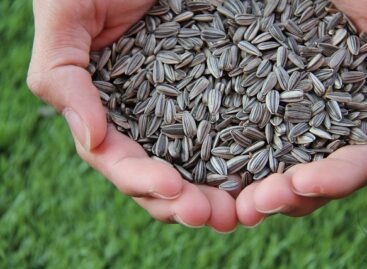Cereals returned from a six-month low on the stock exchange this week
The price of wheat increased, while that of corn and soybeans decreased.

Recently, the price of grain was at a six-month low on the stock exchange. (Photo: Pixabay)
Chicago wheat futures rose on Thursday after earlier hitting a six-month low as participants awaited news on additional grain shipments from Ukraine and an agreement on a maritime corridor. Corn fell as the market continued to be weighed down by the resumption of seaborne exports from war-torn Ukraine and more favorable weather forecasts from the US Midwest. Soybeans also fell, and macroeconomic uncertainty is also present in the grain and oilseed markets.
The most active wheat contract on the Chicago Board of Trade (CBOT) was up 0.1% by 0856 GMT after falling to $7.52 on Wednesday, its lowest since early February. The departure of the first grain ship from the port of Odessa this week and the ongoing harvest in the Northern Hemisphere have eased concerns about wheat supply, although intense demand from importers offers some indication of price developments.
Traders expect a permanent price drop
Crude oil, which hit a near six-month low on Wednesday, also weighed on grain prices, reflecting investor concerns over weakening economic demand in Taiwan and geopolitical tensions. “The macro environment is on the negative side of the ledger, putting further bearish pressure on Ukrainian export titles, better US Midwest rains and bearish seasonals,” Peak Trading Research wrote in a note. The start of the war saw the first grain ship to leave a Ukrainian seaport inspected in Turkey since Wednesday and continue on to Lebanon, fueling market expectations that more cargoes could follow under the safe passage deal.
Brokers rely on forecasts instead of guesses
Soybean and corn trading prices have been pressured by weather forecasts that suggest heavy, warmer rains are expected to ease in the US Midwest next week. However, traders remain cautious and attentive to the US Department of Agriculture’s weekly/monthly future production forecasts.
Related news
Sunflower and rapeseed seed prices have decreased
🎧 Hallgasd a cikket: Lejátszás Szünet Folytatás Leállítás Nyelv: Auto…
Read more >Stable above 700 thousand hectares: domestic sunflower cultivation continues to strengthen
🎧 Hallgasd a cikket: Lejátszás Szünet Folytatás Leállítás Nyelv: Auto…
Read more >Producer prices of wheat and corn have decreased – international markets are also under pressure
🎧 Hallgasd a cikket: Lejátszás Szünet Folytatás Leállítás Nyelv: Auto…
Read more >Related news
The New Year’s Eve fireworks fair is back: temporary sales will start in department store parking lots at the end of December
🎧 Hallgasd a cikket: Lejátszás Szünet Folytatás Leállítás Nyelv: Auto…
Read more >The first Eastern European non-alcoholic beer turns 50
🎧 Hallgasd a cikket: Lejátszás Szünet Folytatás Leállítás Nyelv: Auto…
Read more >Sausage: pork prices are already going down, but they won’t be cheaper in stores – a significant correction may come in the spring at the earliest
🎧 Hallgasd a cikket: Lejátszás Szünet Folytatás Leállítás Nyelv: Auto…
Read more >






